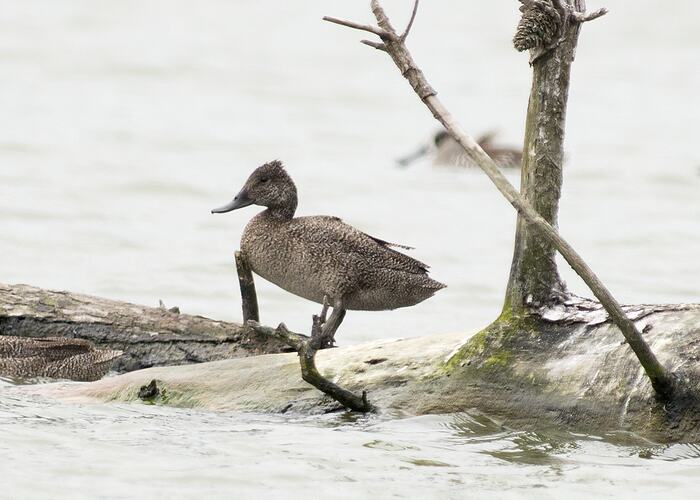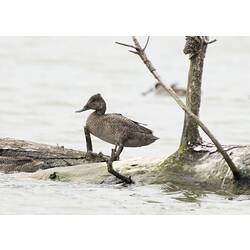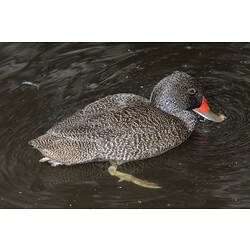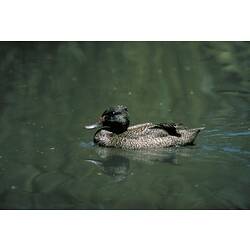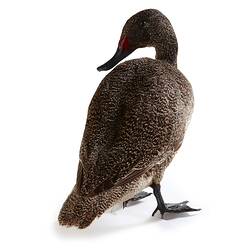General Description
The head of this species is peaked at the rear and has a distinctive narrow and slightly upturned bill. Body dark grey-brown and mottled with fine white patches. Front of wings white underneath. During the breeding season the male's bill becomes crimson at the base. In flight, it has a distinctive rapid wing beat and holds its head low, making it appear hunchbacked. Bill to tail length up to 59 cm.
Biology
Freckled Ducks spend most of their time resting under dense cover near water. They feed during the night and at dawn and dusk on small invertebrates, algae, seeds and aquatic grasses, normally wading in shallow water. The breeding season is typically October to December, but can occur at other times when conditions are favourable. Twigs are finely woven into a bowl-shaped nest lined with a layer of down. The nest is usually located on the ground at or near water level. Females incubate and care for the chicks, with the male leaving after the incubation period. During summer when inland wetlands dry out, Freckled Ducks disperse to subcoastal or coastal wetlands. Freckled Ducks are listed as endangered in Victoria. The major threats to Freckled Ducks include habitat loss or modification, disturbance of water regimes and shooting. The species is nomadic and often rare, but can have irruptive population booms when large numbers of birds form migratory groups, probably due to changes in their food supply.
Distribution
Freckled Ducks breed in swamps in inland Australia. When these wetlands dry out during summer, they disperse towards coastal and subcoastal wetlands in south-western and south-eastern Australia.
Habitat
Wetlands, lakes, and permanent fresh water swamps and creeks with heavy growth of cumbungi or tea-tree.
More Information
-
Animal Type
-
Animal SubType
-
Brief Id
A broad-bodied duck, dark greyish-brown in colour with a large head. The dark brown plumage is evenly freckled/spotted all over with white or buff.
-
Colours
Grey, White, Brown
-
Maximum Size
59 cm
-
Habitats
-
Diet
Omnivore
-
Diet Categories
Aquatic plants, Invertebrates, Seeds
-
Endemicity
-
Commercial
No
-
Conservation Statuses
CITES: Not listed, FFG Threatened List: Endangered, EPBC Act 1999: Not listed, IUCN Red List: Least Concern
-
Taxon Name
-
Common Name
Freckled Duck
-
Kingdom
-
Phylum
-
Subphylum
-
Class
-
Subclass
-
Order
-
Family
-
Subfamily
-
Genus
-
Species Name
naevosa
